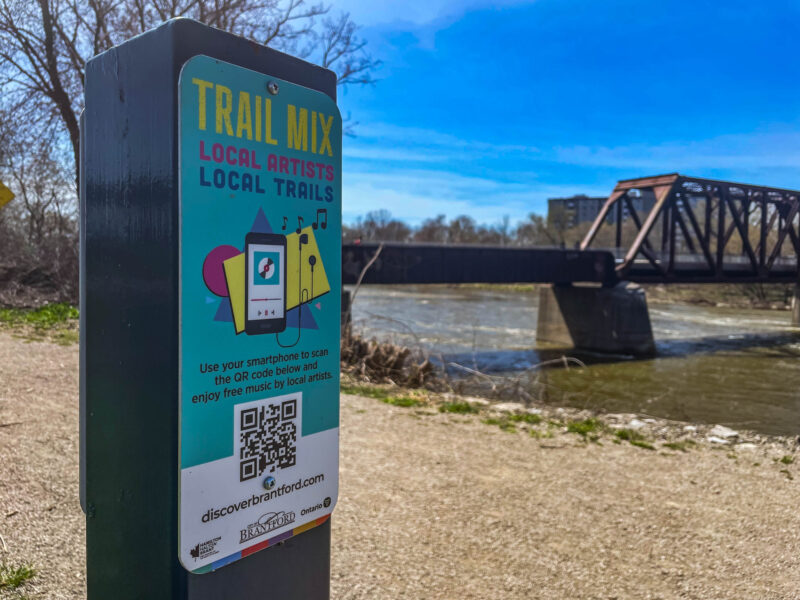Of all the journeys one could take, the easiest and potentially most important in today’s society is exploring the great outdoors.
With the march of progress being ever forward, and countryside urbanizing to meet that progress’ economic needs, city based life is becoming distanced from the wilderness. Although it isn’t hard by any means to find a local park to get some fresh air, the city hustle is still present. In an ideal world there would be a park the size of Algonquin within an hour drive of Toronto, but unfortunately that isn’t the case. But there are ways to make due.
The county of Brant is home to 70 kilometers of trails to be explored. While these trails aren’t quite as breathtaking as one you might find out in the Rockies, they have a charm of their own. On top of that, if having some kind of geological landmark is an absolute requirement to get a city liver out of the house, Hamilton goes by the name “The City of Waterfalls” and does not fail to live up to it. Dundas Peak and Albion Falls are some personal favourites.
While yes, it can be kind of tedious to get out and hike when there are other things one could occupy their time with, and the appeal of going out and exploring can be lost on someone when they have more term papers lined up than what should be legally allowed. However, when finals or stress in general come knocking, going for a hike is probably one of the easiest remedies.
In a study by Jo Bennet and Jules Pretty, they found that more, “green exercise” boosted self-esteem and mood, both of which are indicators of mental health. Bennet and Pretty explained that green exercise is exercising that brings you in contact with nature.
“Ecosystems provide important services driven by provisioning, regulation, and support functions,” writes Bennet and Pretty. “It is clear they also provide a health service arising from direct activities in contact with nature. Recognition of the potential contribution of natural ecosystems to human population health may contribute to addressing problems associated with inactivity, obesity, mental ill-health, and other chronic diseases. Many of these urgent health challenges are also connected to sedentary and indoor lifestyles.”
In addition, with all of the nature this country has, it is a waste not to go out and explore it. Southern Ontario has three of Canada’s 12 biosphere reserves. A biosphere reserve is designated by UNESCO after being nominated by its nation. Once nominated, the biosphere is recognized worldwide and is used to understand how humanity and its environment interact. The three we have here are Long Point, the Niagara Escarpment, and Georgian Bay.
Long Point is the world’s second largest freshwater peninsula, and is about an hour drive from downtown Brantford. Provided it’s probably best to visit Long Point in the summer rather than during any given semester, what with their “habitats including long, uninterrupted beaches, undisturbed sand dunes, grassy ridges, wet meadows, woodlands, marshes and ponds, coldwater streams, and the shallow Inner Bay host a corresponding array of flora and fauna” according to the Canadian Biospheres Reserves Association.
On the other hand, the Niagara escarpment would probably have to be the most incredible (and by far biggest) ecotourism attraction that our neck of the woods has to offer. The escarpment is a shelf that ranges from Niagara falls (go figure) all the way north to Manitoulin island. Most of the area is protected by the Bruce Trail Society, which runs hikes and even, “End to End” marathons. While exploring this megalithic trail you can find yourself in underwater caves, at the bottom of waterfalls, and sitting at the edge of cliff faces.
In general, Canada is dropping the ball in terms of preserving wildlife when comparing it to other countries. While the global average of protected wilderness by country is close to 12 per cent, Canada ranks in at only eight per cent. To make up for it, Canada joined a ten year plan to boost it’s protected wilderness by almost 100 per cent.
“Based on our assessment of progress since Canada endorsed the UN Convention on Biological Diversity 10-year plan in 2010, it would take us 50 years from today, not five, to meet our commitment to protect at least 17 per cent of our land and freshwater. And 17 per cent is only the next step we need to take towards protecting at least half to ensure Canada continues to have healthy, functioning ecosystems,” says Alison Woodley, national director of CPAWS’ parks program.
Whether it be going for a walk along the Grand River or spending a week in Algonquin, get out there and explore the nature that is still around town. Not only will it help you physically as well as mentally, but your being there can help make sure that future generations will be able to as well.




